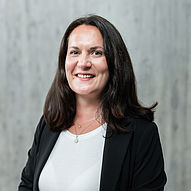
News
09/10/2025 Congratulations
Stefan Schreder has completed the continuing education programme for the professionalisation of university teaching successfully and received his certificate. Well done!
03/10/2025 New publication
Ready to view, read and share (click here). Happy to inform about a new journal article by Helen Jossberger, Els Boshuizen, Hans Gruber and Stefan Krauss entitled "Trends in Expertise Studies in the Domain of Teaching" published in the journal ZDM-Mathematics Education. This article is part of a Special Issue that was edited by Gabriele Kaiser and Johannes König.
Abstract
Education permeates the entire society and without doubt what teachers do matters. Therefore, it is no surprise that researchers, practitioners, and policy makers share an interest in understanding outstanding performance and are eager to learn more about possibilities to support expertise development in the domain of teaching. Since the very beginning, expertise research is intrigued by the extraordinary cognitive processing of experts. In this contribution, we revisit the roots of expertise research and identify challenges when transferring this paradigm to the teaching profession. A literature review including 40 empirical studies is presented aiming at providing a historical overview and identifying trends in expertise research. Several commonalities, systematic differences and trends are apparent regarding the selection of participant groups, the role of the domain, the authenticity of setting and task, macro- and micro-level measurement, the development of tools and methods, and dynamics in research goals including merging of research paradigms. The discussion of the findings includes a plea for future directions of expertise research.
01/10/2025 Welcome

We warmly welcome Kathleen Stürmer as new chair holder in Regensburg and are looking forward to inspiring collaborations.
30/08/2025 E-CER Invited Symposium at EARLI
From 25-29 August, the EARLI conference was hosted by the University of Graz. In collaboration with Andreas Rausch and Dorothy Duchatelet, Helen Jossberger organised a symposium on "Scaffolding Learning and Professional Development in Simulations". It was great to have Herbert Thomann, Gilles Obourdin, Amber van Kampen, Ilona Friso-van den Bos as presenters and Raija Hämäläinen as discussant. Check out the programme here.
Symposium Abstract
Simulations are considered powerful learning environments that are valued for their richness and authenticity. Learners can engage with complex, real-world problems in a safe and controlled setting, but the complexity and openness in simulation-based environments may also hinder learning. Although research has identified potentials of simulations to support learning and professional development, we still lack knowledge about effective means to facilitate learning and performance in these complex settings. This symposium aims to increase understanding of scaffolding in different types of simulations by bringing together four studies. The first contribution presents a conceptual framework that distinguishes 20 key features of scaffolding. Along four dimensions of scaffolding (appearance, trigger, source and instructional means) a design matrix has been created to guide the analysis and design of scaffolding in simulations. With this framework as starting point, we present three empirical studies showcasing different types of simulations including computer simulation, virtual reality (VR) and real-life simulation. The second contribution is a study that investigates the effectiveness of personalized prompts to support problem-solving in a digital office simulation called LUCA. The third contribution is a design study that examines the validity of stealth assessment in classifying learner skill levels in adaptive immersive-VR training for complex skills using a forklift simulator. The fourth contribution explores the use of scaffolds in VR and real-life simulations by collecting observational and physiological data to enhance police training. This symposium aims to open up discussion and reflection on scaffolding in simulation-based learning environments and inherent challenges.
05/06/2025 Spotlight on Teaching

On June 5th, Stefan Schreder presented a poster entitled "Worked-Examples und Scaffolding in der Methodenausbildung: Ein didaktischer Optimierungsansatz", in which he illustrated how he implemented some innovative ideas in his course. Check out his poster here.
01/06/2025 Congratulations

30/05/2025 New publication
 | 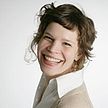 | 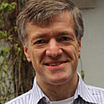 |
Recently, Stefan Schreder, Helen Jossberger and Hans Gruber published an article on “Mountain rescuers’ experiences with video-assisted and
verbal debriefings: a qualitative study”. The article was published in the journal Instructional Science and can be viewed here.
Abstract
The reflection on previous performance during debriefing plays an important role in learning from simulations. While debriefings are traditionally held as verbal debriefings (VD), advancements in video and software technology led to an increased use of video-assisted debriefings (VAD). Although VAD is nowadays considered to be the gold standard, prior research has found mixed results concerning the experiences connected to this form of debriefing. This study sheds light on the experiences of all the actors involved in the process, by including both participants and facilitators. A distinction between their experiences within VD, lower-tech and high-tech VAD was made. In total, 42 mountain rescuers and five facilitators participated in this study during three one-day-long simulation trainings. While participants shared their experiences in focus group interviews, the facilitators were invited for individual interviews. The results indicate that both participants and facilitators preferred high-tech VAD for its ability to objectively review their performance in detail. It was seen as beneficial to gain a deeper understanding of how mistakes occurred during the simulation and the visualisation improved the acceptance of feedback. However, it has also been found that VAD in general can be intrusive and cause additional cognitive demand, stress, and unpleasant emotions. The study shows that VAD can have advantages over VD but requires careful implementation by the facilitators to prevent the possible drawbacks.
02/04/2025 PDRnet in Kassel
In March, 27-28, the PDRnet was hosted by Michal Goller and took place in Kassel. Simon Schmidt and Helen Jossberger presented a paper entitled "Perspectives of semi-professional and professional popular music bands about collective and individual goal setting, monitoring, and feedback". We had lively discussions, and all participants received valuable feedback on their work in progress. Thanks a lot for organising such an inspiring meeting and introducing us to the famous racoon.
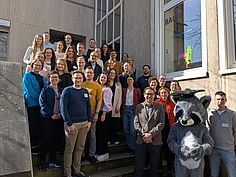 | 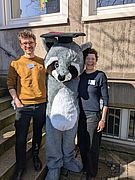 |
Chair holder
Prof. Dr. Kathleen Stürmer
PT 4.1.28
Mail: Kathleen.Stuermer[at]ur.de
Secretariat: Sekretariat.Stuermer[at]ur.de

